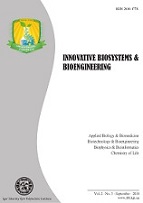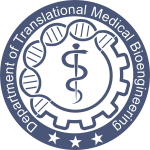Experience in Clinical Application of Cryopreserved Placental Derivatives: Cells, Tissue, Membranes, Extract, and Cord Blood Serum
DOI:
https://doi.org/10.20535/ibb.2020.4.3.215215Keywords:
Cell therapy, Tissue therapy, Placenta, Biobanking, Regenerative medicine, Stem cellsAbstract
Background. The human placenta is a promising source of biomaterial for regenerative medicine. This is primarily due to the availability of a sufficient amount of material, low immunogenicity, a large number of stem cells, and high proliferative cell potential. The effectiveness of stem cells, their lysates, and conditioned media in various pathological conditions has been proven in many studies. Most studies are experimental, or are in different phases of clinical trials. At the same time, in Ukraine there is a wealth of experience of clinical using the cryopreserved placenta medico-immunobiological preparations, which can be the basis for further application of placental material.
Objective. We aim to perform a critical analysis of data on the effectiveness and prospects of application of the cryopreserved placenta preparations (cells, tissues, membranes, extract and cord blood serum) in clinical practice.
Methods. The results of clinical application of 2,579 medical immunobiological Platex and Cryocell placenta preparations were analyzed. An attention was paid to the effectiveness, course of concomitant, comorbid pathology in patients, as well as the presence of negative responses and complications. The number of the preparations used and the one of the patients according to the nosological forms were counted.
Results. The experience of application of medical immunobiological preparations of placental origin in obstetric-gynecological, therapeutic, neurological and endocrinological pathologies is analyzed in the work. The obtained data are compared with the research results in the corresponding model experiments of in vitro and in vivo systems. The positive effect of placental preparations on the course of miscarriage, climacteric syndrome, infertility, diabetes mellitus, coronary heart disease, multiple sclerosis, amyotrophic lateral sclerosis, trophic ulcers has been determined. Contraindications for placenta preparations are some malignancies and an infectious disease process without proper pathogen elimination.
Conclusions. Cryopreserved placenta preparations are effective when used in obstetric, gynecological, neurological, endocrinological and therapeutic practice. Their effect is primarily observed in diseases, which are accompanied by autoimmune reactions, hormonal disorders, dysplastic or degenerative processes. The restricted application of placenta preparations is infectious disease process without proper pathogen elimination.References
Brown C, McKee C, Bakshi S, Walker K, Hakman E, Halassy S, et al. Mesenchymal stem cells: Cell therapy and regeneration potential. Journal of Tissue Engineering and Regenerative Medicine. 2019;13(9):1738-55. DOI: 10.1002/term.2914
Pogozhykh O, Prokopyuk V, Figueiredo C, Pogozhykh D. Placenta and Placental Derivatives in Regenerative Therapies: Experimental Studies, History, and Prospects. Stem Cells International. 2018;2018:4837930. DOI: 10.1155/2018/4837930
Silini AR, Cargnoni A, Magatti M, Pianta S, Parolini O. The long path of human placenta, and its derivatives, in regenerative medicine. Frontiers in Bioengineering and Biotechnology. 2015;3:162. DOI: 10.3389/fbioe.2015.00162
Moon P-D, Kim K-Y, Rew K-H, Kim H-M, Jeong H-J. Anti-fatigue effects of porcine placenta and its amino acids in a behavioral test on mice. Canadian Journal of Physiology and Pharmacology. 2014;92(11):937-44. DOI: 10.1139/cjpp-2014-0068
Perillo A, Bonanno G, Pierelli L, Rutella S, Scambia G, Mancuso S. Stem cells in gynecology and obstetrics. Panminerva Medica. 2004;46(1):49-59.
Pipino C, Shangaris P, Resca E, Zia S, Deprest J, Sebire NJ, et al. Placenta as a reservoir of stem cells: an underutilized resource? British Medical Bulletin. 2013;105(1):43-68. DOI: 10.1093/bmb/lds033
Prokopyuk VYu, Grischenko OV, Prokopyuk OV, Shevchenko NO, Falko OV, Storchak AV, Schedrov AO. Effect of Cryopreserved Placental Explants on Female Reproductive System Under Normal and Pathological Conditions (Experimental study). Problems of Cryobiology and Cryomedicine. 2017;27(3):250-65. DOI: 10.15407/cryo27.03.250
Grishchenko VI, Goltsev AN, Yurchenko TN, Belonozhko AP, Volina VV. Placenta: cryopreservation, structure, properties, prospects for clinical application. Kharkov; 2011, 268 p.
Chizhevsky VV, Prokopyuk OS, Groshevoy MI, Lipina OV, Prokopyuk VYu. Low-temperature bank of biological objects: scientific and methodological foundations and development prospects. In: Current problems of cryobiology and cryomedicine. Kharkov: Ryder; 2012, pp. 469-86.
Kozub MM, Prokopiuk VY, Skibina KP, Prokopiuk OV, Kozub NI. Comparison of various of tissue and cell therapy approaches when restoring ovarian, hepatic and kidney's function after chemotherapy-induced ovarian failure. Experimental Oncology. 2017;39(3):181-5. DOI: 10.31768/2312-8852.2017.39(3):181-185
Prokopiuk VYu. Influence of Cryopreserved and Freshly Isolated Placental Explants and Cells - Conditioned Media on Murine Uterine and Ovarian Organotypic Cultures. Problems of Cryobiology and Cryomedicine. 2018;28(2):139-50. DOI: 10.15407/cryo28.02.139
Prokopyuk OS, Prokopyuk VYu, Pasieshvili NM, Chyzhevskiy VV, Trifonov VYu, Karpenko VG, Loginova OO. Implantation of Cryopreserved Human Placental Fragments Restores Prooxidant-Antioxidant Balance in Experimental Animals of Late Ontogeny. Problems of Cryobiology and Cryomedicine. 2017;27(1):61-70. DOI: 10.15407/cryo27.01.061
Pischiutta F, Sammali E, Parolini O, Carswell HVO, Zanier ER. Placenta-Derived Cells for Acute Brain Injury. Cell Transplantation. 2018;27(1):151-67. DOI: 10.1177/0963689717732992
Prokopyuk V, Chub O, Shevchenko M, Prokopyuk O. Placental stem cells, organotypic culture and human placenta extract have neuroprotective activity in vitro. Cell and Organ Transplantology. 2017;5(1):39-42. DOI: 10.22494/cot.v5i1.67
Ringden O, Baygan A, Remberger M, Gustafsson B, Winiarski J, Khoein B, et al. Placenta-Derived Decidua Stromal Cells for Treatment of Severe Acute Graft-Versus-Host Disease. Stem Cells Translational Medicine. 2018;7(4):325-31. DOI: 10.1002/sctm.17-0167
Seo T-b, Han I-s, Yoon J-h, Seol I-c, Kim Y-s, Jo H-k, et al. Growth-promoting activity of Hominis Placenta extract on regenerating sciatic nerve. Acta Pharmacologica Sinica. 2006;27(1):50-8. DOI: 10.1111/j.1745-7254.2006.00252.x
Musatova IB, Volina VV, Chub OV, Prokopyuk VYu, Prokopyuk OS. Effects of Implantation of Cryopreserved Placental Explants on the Behavioral Indices and Morphological Characteristics of the Cerebral Structures in Senescent Mice. Neurophysiology. 2017;49(5):363-71. DOI: 10.1007/s11062-018-9696-4
Jirsova K, Jones GLA. Amniotic membrane in ophthalmology: properties, preparation, storage and indications for grafting – a review. Cell and Tissue Banking. 2017;18(2):193-204. DOI: 10.1007/s10561-017-9618-5
Paolin A, Cogliati E, Trojan D, Griffoni C, Grassetto A, Elbadawy HM, Ponzin D. Amniotic membranes in ophthalmology: long term data on transplantation outcomes. Cell and Tissue Banking. 2016;17(1):51-8. DOI: 10.1007/s10561-015-9520-y
Samadi P, Saki S, Manoochehri H, Sheykhhasan M. Therapeutic Applications of Mesenchymal Stem Cells: A Comprehensive Review. Current Stem Cell Research & Therapy. 2021;16(3):323-53. DOI: 10.2174/1574888X15666200914142709
Downloads
Published
How to Cite
Issue
Section
License
Copyright (c) 2020 The Author(s)

This work is licensed under a Creative Commons Attribution 4.0 International License.
The ownership of copyright remains with the Authors.
Authors may use their own material in other publications provided that the Journal is acknowledged as the original place of publication and National Technical University of Ukraine “Igor Sikorsky Kyiv Polytechnic Institute” as the Publisher.
Authors are reminded that it is their responsibility to comply with copyright laws. It is essential to ensure that no part of the text or illustrations have appeared or are due to appear in other publications, without prior permission from the copyright holder.
IBB articles are published under Creative Commons licence:- Authors retain copyright and grant the journal right of first publication with the work simultaneously licensed under CC BY 4.0 that allows others to share the work with an acknowledgement of the work's authorship and initial publication in this journal.
- Authors are able to enter into separate, additional contractual arrangements for the non-exclusive distribution of the journal's published version of the work (e.g., post it to an institutional repository or publish it in a book), with an acknowledgement of its initial publication in this journal.
- Authors are permitted and encouraged to post their work online (e.g., in institutional repositories or on their website) prior to and during the submission process, as it can lead to productive exchanges, as well as earlier and greater citation of published work.









